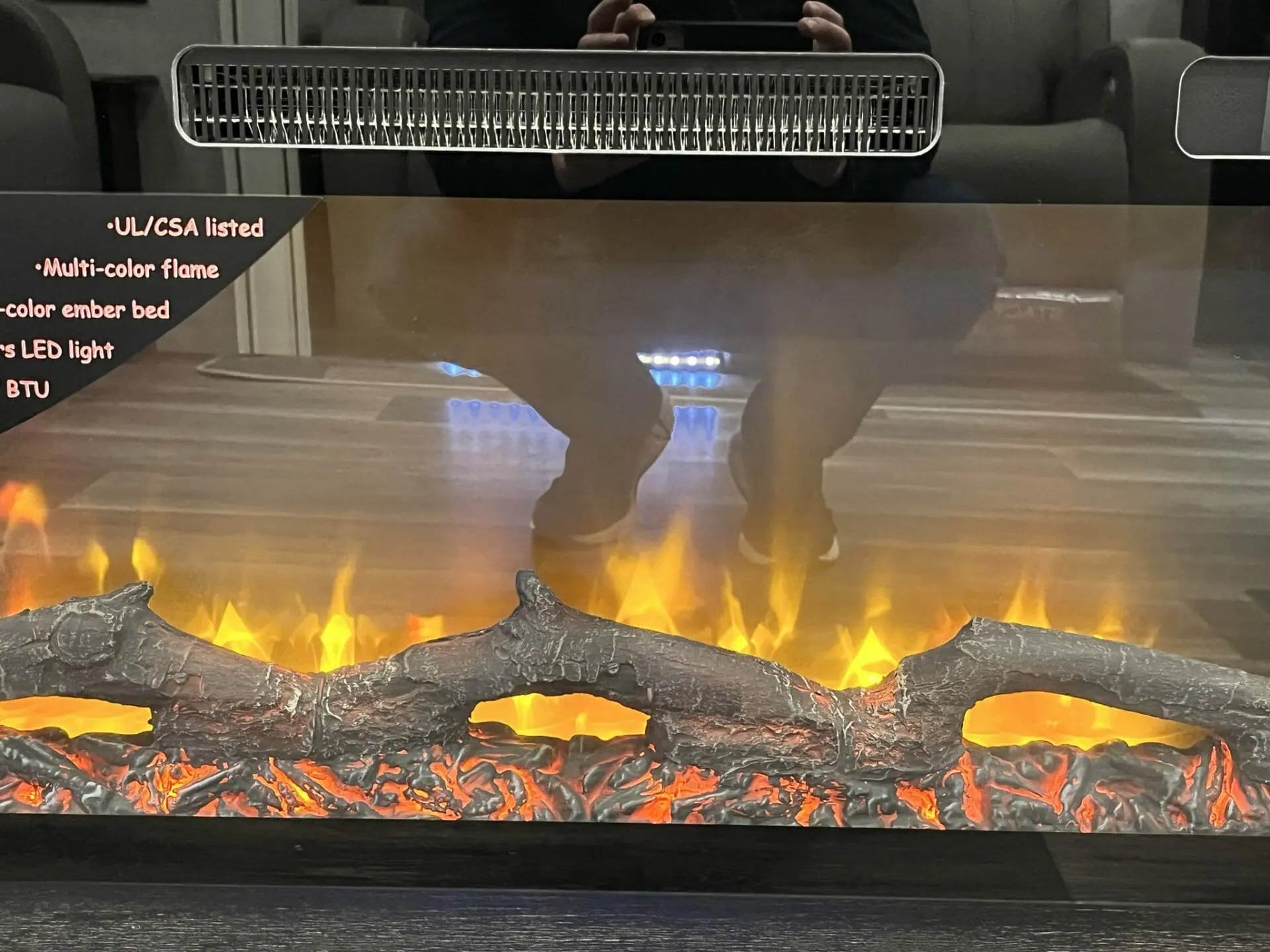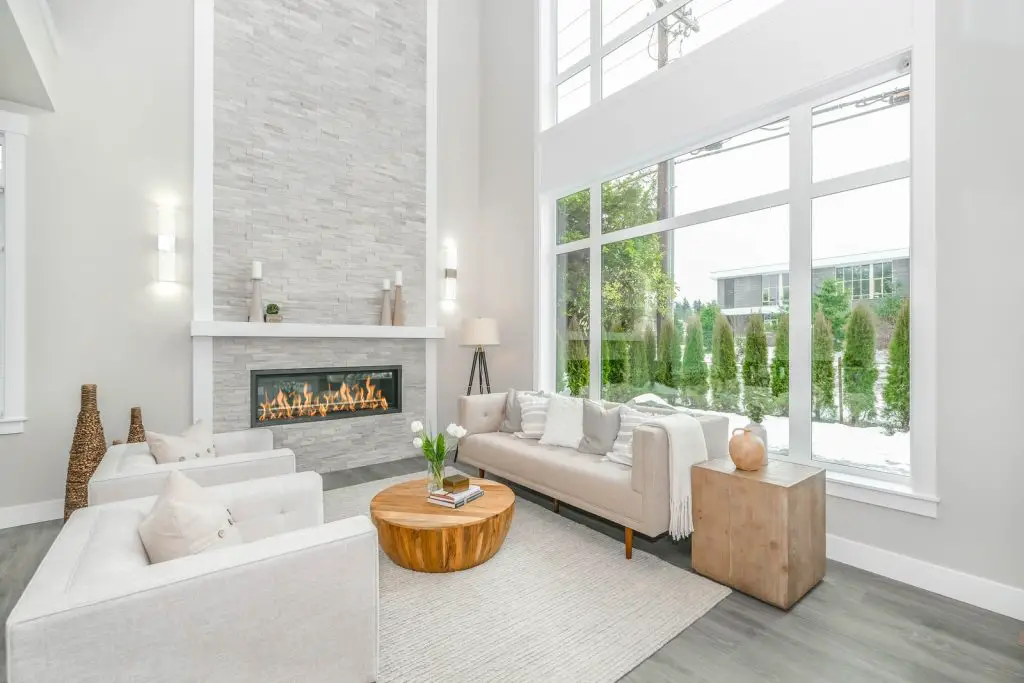Contents
How hot do they get?
- Wood-burning fireplaces can reach temperatures of up to 1,500 degrees. Wood burning is not efficient so the hard surfaces around it will never get hotter than 1,000°F.
- Gas-burning fireplaces burn at around 1,000 degrees. Gas-burning is more efficient. The firebox’s walls and grates can reach 1,000 degrees.
More Info
Under normal circumstances, a fireplace gas can achieve up to 60,000 British Thermal Units (BTUs). To understand this measurement scale, BTU can be defined as the measure used to determine the amount of energy required to heat one pound of water by one degree measurable in Fahrenheit.
The above measurement is important in purchasing the source of heat for your fireplace. For example, gas fireplace buyers may have to consider sources and types of heat that have sufficient BTUs to effectively and sufficiently heat the kind of establishment in question, be it size, location, season, and taste of the occupants.
Modern gas fireplaces are designed to heat a larger part of the room or space in the same floor uniformly irrespective of the proximity to the source of heat; effectively extinguishing the need to sit in proximity to the source of heat for one to appreciate the effect of the fireplace.

Wood fireplaces, on the other hand, can achieve up to about 500 degrees Fahrenheit. It is worth noting that the combustion of wood involves a process known as pyrolysis, a three-stage process through which wood decomposes as it burns.
Suffice to say, optimized modern gas fireplaces are more advanced, effective, and economical as compared to traditional means of heating.
Wood ignites at approximately 390 degrees and progressively, as fire consumes the wood, temperatures are achieved up to close to 500 and 800 degrees dependent on oxygen supply, humidity, types, and conditions of wood, and the design of the fireplace.
After the decomposition stage of pyrolysis, the heating of woods gets to furnace burning temperatures whereby all wood in its original form is already consumed and the residue in the form of burning charcoal sustains the heat.
What Types Of Gas Fireplaces Are There?
There are three types and stylings of gas fireplaces:
Log Set
This is the most economical gas fireplace. It is made up of a ceramic log set into an existing fireplace. This choice can be used in new fireplaces.
Inserted
Inserted gas fireplaces are made up of two metal boxes; one relatively small box housing the log and the burner set and another larger log that engulfs the entire setup. The designs necessitate a gap between the two metal boxes to allow for heat to pass. Most of the inserted gas fireplace setups come with a fixed glass pane in front or a metal panel.
Built-In
Built-in gas fireplaces borrow most of its design language from the inserted gas fireplace design. The main distinction between the built-in gas fireplace and the inserted gas fireplace is that the built-in gas fireplace does not need a separate fireplace or a chimney. The built-in gas fireplace can either be ventilated or unventilated.
Are Gas Fireplaces Better Than Wood Burning Fireplaces?
There is no brief and straight answer to this. This depends on personal preference and purpose.
If one is purely looking for an economical fireplace, the best option is a wood fireplace. This may be primarily because wood can be relatively cheap; wood being naturally occurring, simply and readily extractable and wood can be free.
On the flip side, wood burning can be messy and hazardous if not handled properly- especially with all the firewood popping and crackling. Ignition, temperature regulation, and regulation of flames and direction of smoke may need some getting used to and some skill.
On the other hand, gas is more or less automated, therefore taking less effort and a lot less work to run and manage. Other than turning on and off of the fireplace, which may involve the on and off movement of the valve, a gas fireplace will need no other kind of hands-on operation.
Suffice to say, a gas fireplace may seem expensive to run, but the fact that using simple technologies and valves, one can control the quality and quantity of heat depending on the needs of the user and the size of the room; this is not possible with wood fireplaces, therefore, implying wastage and less deliberate savings
Bottom Line
A gas fireplace is more elegant, clean and can be put into more than one use. With the right kind of technology and some bit of customization and skill, a gas fireplace can be greatly economical, especially for regular and long-term usage. For some gas fireplace setups, one can use remote-controlled commands when igniting and regulating of temperatures and the direction of heat.
The maintenance cost is relatively cheap in the long run, and it comes with a myriad of customizations, types and styling to suit everyone’s style and cost.
Gas fireplaces as opposed to wood fireplaces can be placed anywhere in the house, therefore, providing a great deal of convenience and freedom.

